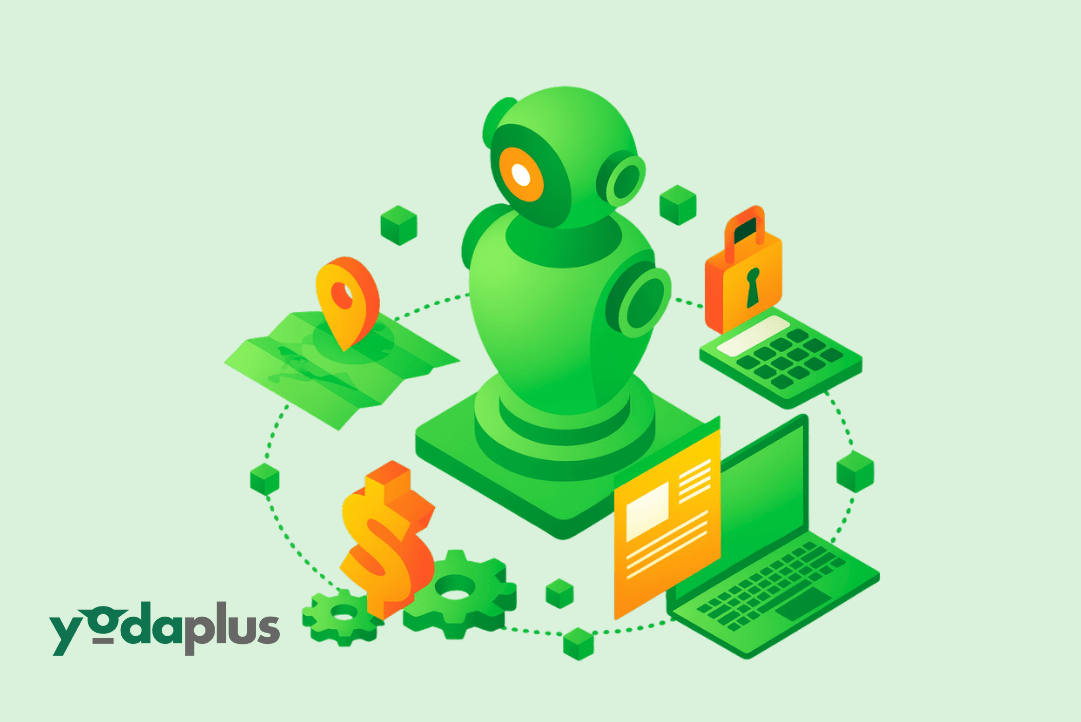
Building Persistent Identity Models for Agentic AI Systems
October 30, 2025 By Yodaplus
One of the biggest gaps in current AI systems is memory. Most AI agents perform brilliantly in isolated interactions but forget everything the moment the conversation ends. Each new session starts from zero, forcing the system to relearn context and tone. For Agentic AI, which is designed to act with autonomy and continuity, this forgetfulness is a serious limitation. To make decisions that reflect understanding, experience, and relationships, an agent must remember who it is and whom it’s working with. That’s where persistent identity models come in.
These models give AI a sense of continuity. They allow systems to recall past actions, adapt to changing inputs, and maintain consistent behavior over time. In short, they let AI act less like a tool and more like a partner.
Why Identity Matters in Agentic AI
When humans make decisions, they rely on memories built from facts, experiences, and emotions. Agentic AI needs a similar mechanism to function effectively. Persistent identity helps agents build a narrative about their goals, past actions, and relationships.
Imagine a Crew AI setup where multiple agents manage different parts of a workflow. One handles customer interactions, another oversees compliance, and another tracks reports. Without identity continuity, these agents operate as isolated systems. With persistent identity, they remember past exchanges, share context, and make decisions that complement each other.
Identity also improves trust. Users feel more confident interacting with an AI that remembers preferences and understands past interactions. For businesses, this means more efficient processes and stronger human–AI collaboration.
What Are Persistent Identity Models
A persistent identity model is the AI’s way of building and maintaining memory. It retains key context across time, storing what matters and recalling it when needed. This can include:
-
Previous conversations or tasks
-
User preferences or interaction history
-
The agent’s own performance and updates
The model does not save everything. It selectively retains relevant information that improves decisions and experiences. In AI applications, identity persistence allows an agent to recognize continuity. It can recall earlier instructions, adjust to feedback, and make more informed choices.
Behind the scenes, this system relies on structured memory layers, machine learning models, and NLP techniques to understand and organize data efficiently.
How Persistent Identity Models Work
Creating a persistent identity system involves several interconnected steps that combine context, structure, and reasoning.
-
Context Capture
Each interaction provides valuable input. The system identifies patterns such as language tone, user intent, or recurring queries. This step builds the foundation for long-term understanding. -
Representation and Encoding
Using LLMs and data mining, the AI encodes context into structured formats that allow it to recognize patterns in future sessions. This helps the agent connect new inputs with past experiences. -
Memory Storage and Retrieval
The stored data is organized in a vector-based format, allowing semantic recall instead of direct keyword matching. This makes the system capable of remembering related concepts, not just identical ones. -
Adaptation and Learning
Over time, the AI learns which information is useful and which is not. It refines what it retains through reinforcement learning, keeping memory lean and relevant. -
Privacy and Governance
Persistent identity operates under strict privacy standards. Responsible artificial intelligence services ensure that agents only retain data necessary for performance while respecting confidentiality and compliance norms.
These steps combine to create an AI that remembers what it needs, forgets what it should, and continuously improves through learning and feedback.
Benefits of Building Persistent Identity
A persistent identity model transforms how Agentic AI behaves. Instead of resetting after every interaction, it builds continuity and depth.
-
Contextual Awareness: The AI connects past data with new inputs to provide accurate responses.
-
Personalization: Users experience interactions tailored to their preferences and history.
-
Efficiency: Memory reduces repetitive processing, improving overall performance.
-
Collaboration: In multi-agent systems, shared identity enables smoother coordination.
-
User Trust: Consistency in tone and behavior makes the system feel reliable and familiar.
Persistent identity shifts Agentic AI from short-term automation toward long-term intelligence, allowing systems to act with purpose rather than repetition.
The Role of Generative AI and Collaboration
Generative AI enhances persistent identity by allowing systems to refine their memory dynamically. Instead of storing static data, agents can generate real-time context updates based on recent actions and outcomes. This helps them respond more accurately and maintain an evolving understanding of users and environments.
In collaborative environments such as Crew AI, different agents maintain their own memory but share essential data across the group. This collective awareness ensures that decisions stay aligned even when responsibilities differ.
Modern Agentic AI platforms, tools, and solutions already use these methods to maintain identity consistency. They help AI agents work more cohesively, adapt faster, and communicate with greater accuracy across tasks.
Conclusion
Persistent identity models bring stability and intelligence to Agentic AI. They give agents the ability to remember, adapt, and reason based on experience. Instead of acting in isolation, these systems operate with continuity and purpose.
For organizations, identity-driven AI can enhance automation, strengthen personalization, and improve long-term decision-making. As AI technology continues to evolve, the ability to remember will define how intelligent systems perform in the real world.
Building persistent identity is not about giving machines emotions. It is about giving them context and awareness so that their actions make sense across time.